|
Black-cheeked Ant-Tanager / Tangara Hormiguera Carinegra (Habia atrimaxillaris) |
QUICK TIPS:
1) Consider overall plumage - males are blackish-gray above with a bright orange throat, while females are a duller gray, with a salmon wash to the throat.
2) Check the iris - on adults it is orange-red, while on HY birds (remaining so for an unknown proportion of SY birds in spring) it is brownish.
3) Examine the wing - it appears that on SY birds, there may be a distinct moult limit between retained brown juvenile feathers (among the primary coverts, primaries, and secondaries) and replaced blackish adult feathers in those same tracts as well as the greater coverts. ASY birds in spring may also be undergoing active moult, but the contrast between old and new feathers is more subtle; the pattern, timing, and extent of moult require further study.
4) Look at the tail - HY/SY birds may have somewhat more narrow and tapered rectrices, while the rectrices of AHY/ASY birds may be broader and more rounded at the tip.
Species account updated March 2009 |
|
Ageing and sexing overview:
Ageing and sexing details:
|
SPRING: ASY-M (after-second-year male) |
Adult males are somewhat darker on the back and head than females, and have brighter plumage in the throat; the colours on this individual are somewhat washed out by virtue of having accidentally been photographed using a flash.
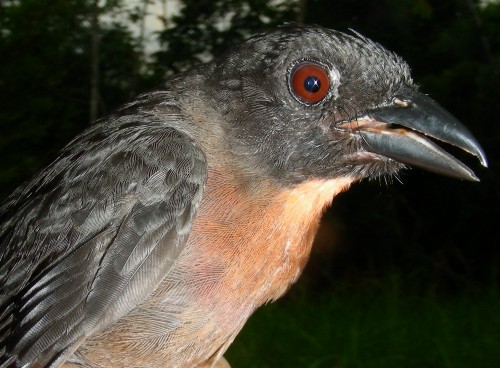
Photo by Marcel Gahbauer, Las Caletas (CR),
April 2008
Note that while active moult is underway on the wing, the contrast in colour between the new and old feathers is not as drastic as with the presumed SY individual shown lower on the page.
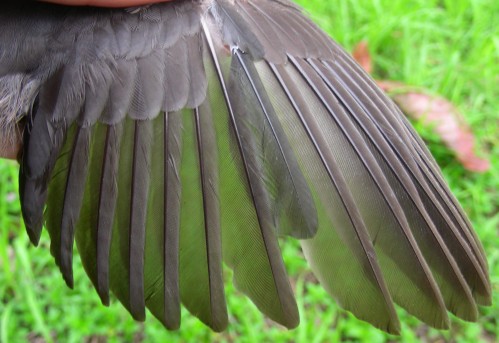
Photo by Marcel Gahbauer, Las Caletas (CR),
April 2008
The tail is incomplete, but the feathers that are present are relatively broad and rounded.
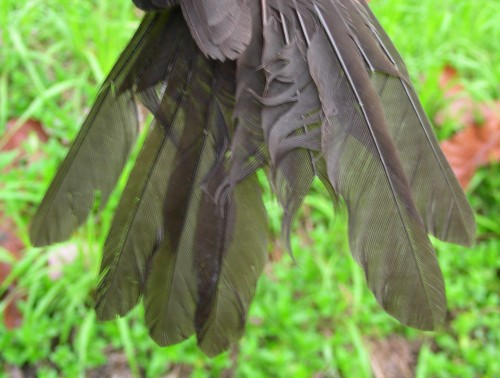
Photo by Marcel Gahbauer, Las Caletas (CR),
April 2008
RETURN TO AGE/SEX
OVERVIEW
|
SPRING: ASY-F (after-second-year female) |
Adult females are similar to males, but somewhat duller/paler above, and with a darker salmon wash to the upper breast and throat.
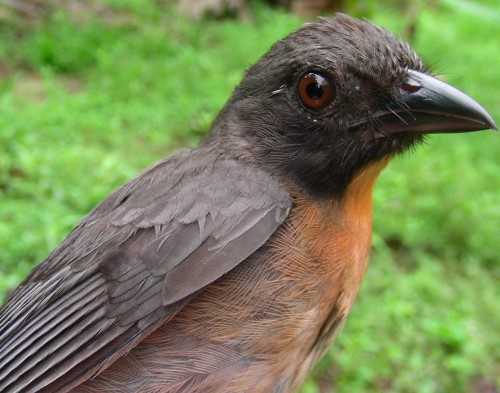
Photo by Marcel Gahbauer, Las Caletas (CR),
April 2008
Note the relatively uniform appearance to the wing.
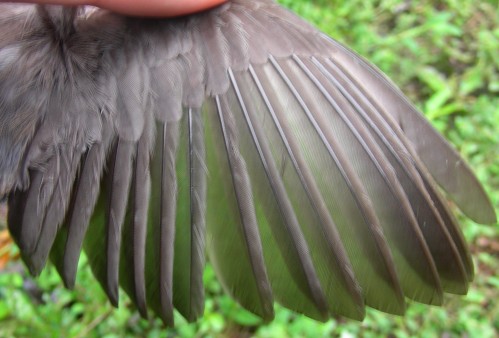
Photo by Marcel Gahbauer, Las Caletas (CR),
April 2008
The rectrices appear relatively broad and rounded.

Photo by Marcel Gahbauer, Las Caletas (CR),
April 2008
RETURN TO AGE/SEX
OVERVIEW
SPRING: SY-U (second year, sex unknown) |
Juvenile Black-cheeked Ant-Tanagers are similar in overall pattern to adults, but duller both above and below. While the details of moult for this species are poorly known, the photos of this specimen (in comparison with those above) suggest that SY birds in spring retain this overall paler appearance. Notice also the brown iris on this bird.
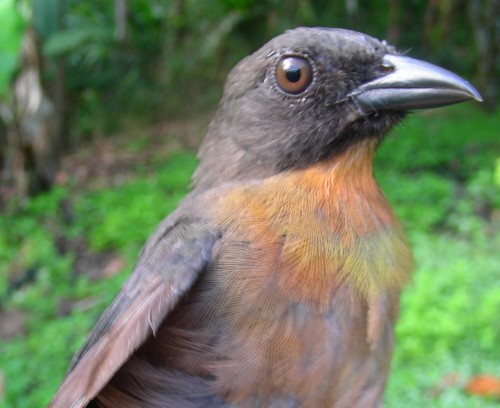
Photo by Marcel Gahbauer, Las Caletas (CR),
April 2008
Note the significant contrast in colour, condition, and to some degree even shape, between the new black adult feathers and the brown juvenile feathers that are being replaced.
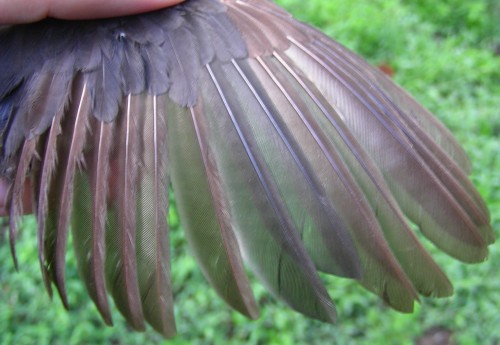
Photo by Marcel Gahbauer, Las Caletas (CR),
April 2008
The rectrices of this presumed SY bird appear narrowed and more pointed than the presumed ASY birds higher on this page.
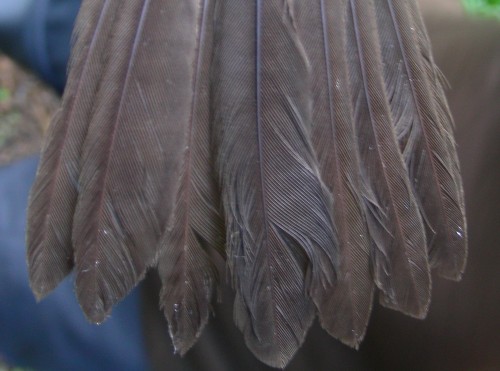
Photo by Marcel Gahbauer, Las Caletas (CR),
April 2008
RETURN TO AGE/SEX
OVERVIEW
|